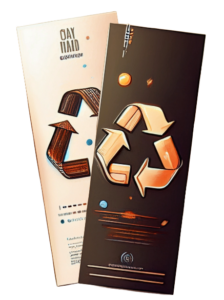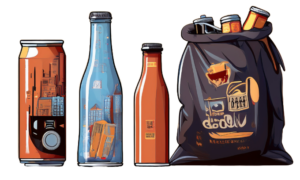Dealer Cooperative Stewardship Plans
A dealer cooperative stewardship plan:
- Outlines how a dealer cooperative intends to fulfill its responsibilities under the law and regulations.
- Communicates a course of action to the public.
Learn more about stewardship plans with the Model Dealer Cooperative Stewardship Plan, which includes statutory and regulatory requirements that dealer cooperative stewardship plans must address.
Approved Stewardship Plans
- Circular CRV Association is currently the only dealer cooperative with an approved stewardship plan.
- Circular CRV Association’s approved Dealer Cooperative Stewardship Plan (with changes identified below)
- CalRecycle approval (July 24, 2025)
Stewardship Plan Changes
Circular CRV Association’s notice of plan changes (October 1, 2025)
Circular CRV Association’s notice of plan changes (September 1, 2025)
Circular CRV Association’s notice of plan changes (August 1, 2025)
Stewardship Plan Review Process
- Circular CRV Association’s April 28, 2025 Stewardship Plan
- CalRecycle’s first notification regarding additional information required (May 27, 2025)
- Circular CRV Association response with additional information (June 6, 2025)
- Circular CRV Association’s June 6, 2025 Updated Stewardship Plan
- CalRecycle’s second notification regarding additional information required (June 13, 2025)
- Circular CRV Association response with additional information (June 17, 2025)
- Circular CRV Association’s originally approved Stewardship Plan (June 17, 2025)
- Public Comments – CalRecycle received 11 comment letters. Copies may be requested via a Public Records Act Request.
Dealer cooperative stewardship plans may be submitted to DealerCoops@calrecycle.ca.gov.
Summary of Stewardship Plan Contents
1. Informational Contents (14 CCR section 2375.2)
- Dealer members and registration numbers
- Unserved convenience zone(s) where the dealer cooperative will redeem
- Federal Tax Identification Number, contact information, decision-makers, nonprofit verification, and Articles
 of Incorporation
of Incorporation - Processors and recycling centers, known redemption sites
- Timeline to become fully operational
2. Substantive Contents (14 CCR section 2375.4)
 Methods of redemption (e.g., pickup service, bag drop, reverse vending machine, other unstaffed method)
Methods of redemption (e.g., pickup service, bag drop, reverse vending machine, other unstaffed method)- Education and outreach activities and materials
- Dispute resolution process, community input opportunities, and consumer convenience strategies
3. Performance Standards (14 CCR section 2375.6)
- Capacity to redeem 100% of beverage containers sold by dealer members
- Redemption of at least 80% of beverage containers sold by dealer members
 Geographic spread of redemption sites, including number of redemption sites in each unserved convenience zone per person
Geographic spread of redemption sites, including number of redemption sites in each unserved convenience zone per person- Average wait time
 4. Budget (14 CCR section 2375.8)
4. Budget (14 CCR section 2375.8)
- Budget and how dealer cooperative stewardship fees support the budget
- Anticipated costs
- Recommended funding level and reserves
This page provides a brief overview and is not intended to provide a comprehensive list of legal requirements. Refer to the statute and regulations for a complete list of requirements. Users are encouraged to seek the assistance of legal counsel to comply with applicable state law based on their pertinent facts and circumstances.
Related Links
- Beverage Container Recycling Home Page
- Beverage Container Recycling Program Updates
- Retailers/Dealers
- Convenience Zones
- Dealer Registration and Management System (DReAMS)
- California’s Beverage Container Recycling Law
- Find Your Nearest Recycling Center
- California Redemption Value (CRV) Computations
- SB-1013 Beverage container recycling bill text
- Dealer Registration and Dealer Cooperatives Rulemaking
For more information, visit Dealer Cooperatives Home

 Methods of redemption (e.g., pickup service, bag drop, reverse vending machine, other unstaffed method)
Methods of redemption (e.g., pickup service, bag drop, reverse vending machine, other unstaffed method) Geographic spread of redemption sites, including number of redemption sites in each unserved convenience zone per person
Geographic spread of redemption sites, including number of redemption sites in each unserved convenience zone per person